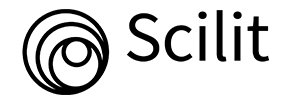
Journal Basic Info
- Impact Factor: 1.989**
- H-Index: 6
- ISSN: 2637-4625
- DOI: 10.25107/2637-4625
Major Scope
- Transplant Surgery
- Ophthalmology
- Trauma Surgery
- Laparoscopic Surgery
- Orthopaedic Surgery
- Cardiac Surgery
- Obstetrics & Gynecology
- Reconstructive Surgery
Abstract
Citation: World J Surg Surg Res. 2021;4(1):1323.DOI: 10.25107/2637-4625.1323
A Comparison of Two Treatments for Neovascular Glaucoma: Anterior Chamber Ahmed Valve with Panretinal Photocoagulation vs. Pars Plana Ahmed Valve with Vitrectomy and Endolaser
Bailey M Harrison1#, Mohammad Yazdanie2#, Sai Nimmagadda1, Hamza Sadhra1, Donald Harrington3, Brent Johnson3, Sana Idrees2 and David A DiLoreto Jr2,4*
1University of Rochester School of Medicine and Dentistry, USA
2Department of Ophthalmology, Flaum Eye Institute, University of Rochester Medical Center, USA
3Department of Biostatistics, University of Rochester, USA
4Center for Visual Sciences, University of Rochester, USA
#Co-first authors Contributed
*Correspondance to: David A DiLoreto Jr
PDF Full Text Research Article | Open Access
Abstract:
Purpose: To compare the effect of two types of treatment for Neovascular Glaucoma (NVG):
Anteriorly placed Ahmed Glaucoma Valve (aAGV) and Panretinal Photocoagulation (PRP)
performed in the clinic to posteriorly placed Ahmed Glaucoma Valve (pAGV) with pars plana
vitrectomy and panretinal photocoagulation performed via Endolaser (PPV/EL).
Methods: A retrospective chart review was performed for the diagnosis of neovascular glaucoma.
Treatment types were reviewed and divided into two groups: Group 1 (aAGV/PRP) and group
2 (pAGV/PPV/EL). The outcome measures evaluated were Visual Acuity (VA, LogMAR) and
intraocular pressure (IOP, mmHg) at 6 month and 1 year intervals post-treatment using the analysis
of variance. Secondary outcomes included complications and number of procedures required postoperatively.
Results: Both groups consisted of 15 eyes in 15 patients. The adjusted change in VA between groups
1 and 2 was not statistically significant at 6 months (-0.28 ± 0.66 vs. -0.04 ± 0.60 logMAR, p=0.32)
nor at 1 year (-0.40 + 0.72 vs. 0.12 + 0.68 vs. logMAR, p=0.10). The mean baseline IOP (43.0 ±
8.9 vs. 38.6 ± 6.6 mmHg) and VA (1.3 ± 0.8 vs. 1.4 ± 0.7 logMAR) were similar between groups
1 and 2. The adjusted change in IOP between groups 1 and 2 was not statistically significant at 6
months (-25.6 ± 9.5 vs. -20.5 ± 6.1 mmHg, p=0.11) nor at1 year (-27.9 ± 11.0 vs. -23.8 ± 10.3
mmHg, p=0.38). Complications and post-operative procedures were minimal and similar between
the two groups except for the number of post-operative anti-VEGF injections required: 31
injections were required in group 1 post-operatively, and 16 injections were required in group 2
post-operatively (p=0.001).
Conclusion: aAGV/PRP and pAGV/PPV/EL were both effective in preserving vision and lowering
IOP with no significant difference detected in VA or IOP outcomes between the two groups at the
6 months and 1 year follow-up intervals. There were no increased risks attributed to one treatment
type vs. another. However, those undergoing aAGV/PRP required more post-operative anti-VEGF
injections. While this is a small study, it does not support one treatment modality over another.
Decision for neovascular glaucoma treatment type should continue to be based on the patient’s
condition, access to care, and type of subspecialty care available.
Keywords:
Cite the Article:
Harrison BM, Yazdanie M, Nimmagadda S, Sadhra H, Harrington D, Johnson B, et al. A Comparison of Two Treatments for Neovascular Glaucoma: Anterior Chamber Ahmed Valve with Panretinal Photocoagulation vs. Pars Plana Ahmed Valve with Vitrectomy and Endolaser. World J Surg Surgical Res. 2021; 4: 1323..













